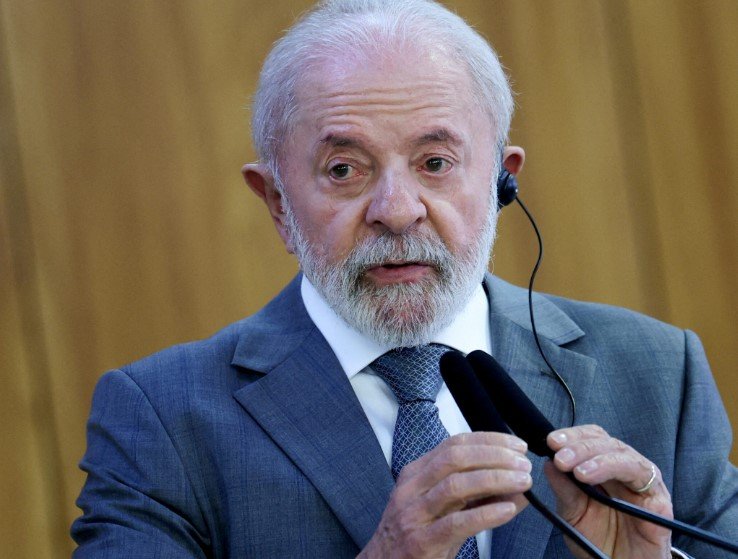Brazil’s president lashes out after U.S. slaps steep tariffs, signaling deeper alignment with BRICS allies and a cold shoulder to Washington
Brazilian President Luiz Inácio Lula da Silva has made it crystal clear—he’s not picking up the phone for Donald Trump. After the U.S. shocked Brasilia with a sweeping 50% tariff on key Brazilian imports, Lula responded not with diplomacy, but with defiance.
“I will not call Trump because he does not want to talk,” Lula told reporters on Tuesday, describing the day of the announcement as “the most regrettable” in recent U.S.-Brazil relations.
Instead, the Brazilian leader says he’s pivoting to friends who will take his calls—India’s Prime Minister Narendra Modi and China’s President Xi Jinping. It’s a bold move at a tense moment, and one that signals a potential reshaping of Brazil’s global alliances just as the BRICS bloc faces mounting pressure from Washington.
A Sudden Blow From Washington
The tariff move caught many off guard—even in Lula’s inner circle. It came just days after a Trump campaign rally where the U.S. president railed against “BRICS freeloaders” and “economic traitors,” accusing member states of undermining American workers through currency pacts and soft trade policy.
The 50% hike applies to a range of Brazilian exports, including:
-
Agricultural commodities like soy and sugar
-
Processed meat
-
Iron ore and steel products
That’s not a slap on the wrist—it’s a punch in the gut for Brazil’s economy, especially its agribusiness sector, which relies heavily on U.S. access.
Brazilian officials say they were given no warning.

Lula’s Anger, Trump’s Shrug
Trump, for his part, has been characteristically nonchalant. When asked over the weekend if he’d be willing to talk with Lula about the dispute, he replied: “He can call me anytime.”
That line seems to have pushed Lula over the edge.
“I will not call,” the Brazilian president said flatly. “We need to talk to leaders who believe in multilateralism and peace. Trump doesn’t listen. He only provokes.”
He’s not just upset—he’s done trying.
Looking East: Modi, Xi, and the BRICS Factor
Instead of pleading for a reversal, Lula said he plans to strengthen ties with other major players in BRICS. Notably, he name-checked Xi Jinping and Narendra Modi as his next outreach calls.
He left Vladimir Putin out of the mix—“because he can’t travel right now”—a nod to the Russian leader’s ICC warrant and limited mobility.
But the broader message was unmistakable: Brazil is now openly leaning into BRICS, even if that means deepening its rift with Washington.
Here’s how Lula reportedly laid it out, according to local media:
-
He plans a virtual summit with Modi and Xi within weeks
-
Brazil will accelerate trade talks with Asian markets
-
He’s exploring new currency mechanisms for BRICS trade to bypass U.S. dollar dependence
One official close to the president said, “The era of chasing U.S. approval is over.”
What This Means for Brazil’s Economy
The tariff could sting—hard. Analysts warn the impact could shave 0.3% to 0.5% off Brazil’s GDP in 2026 if it persists into next year.
Agricultural exporters are already crying foul, with some accusing Trump of playing politics with trade.
“This is not about fairness. This is about geopolitics,” said Cláudio Moreira, head of Brazil’s soy export council. “We’re being punished for being part of BRICS.”
In response, Lula’s government says it will pursue action through the World Trade Organization (WTO), but privately officials aren’t hopeful. The WTO dispute process is notoriously slow—and Trump’s administration has long brushed aside its rulings.
One sentence here.
Brazil’s Shifting Global Playbook
Brazil’s recent foreign policy was once seen as cautious and pragmatic. Under Lula, that’s changing fast.
He’s revived Brazil’s role in BRICS diplomacy. He’s pushed for an expanded G20 agenda that includes more representation for the Global South. Now, with this U.S. snub, he appears ready to double down.
Here’s what’s likely next on Lula’s agenda:
| Action Item | Timeline | Strategic Purpose |
|---|---|---|
| Call with PM Modi | Within 10 days | Reaffirm BRICS unity, discuss trade options |
| Call with Xi Jinping | Before BRICS Summit in Sept | Bolster China-Brazil trade corridors |
| WTO Filing Against U.S. Tariff | By end of August | Signal international resistance to tariffs |
| Push for BRICS Bank Expansion | October Summit | Reduce reliance on Western financial systems |
“We’re not isolating ourselves—we’re building new bridges,” said one senior Brazilian diplomat.
A Diplomatic Row That Could Grow
Make no mistake—this isn’t just about soybeans and steel. This is the kind of rift that can reshape alliances.
Trump has made clear he views BRICS as a “threat to American industry.” He’s also hinted at further tariffs on India and China if their trade behavior doesn’t shift.
By contrast, Brazil is signaling it’s ready to be the connective tissue of the Global South.
Will this become a full-on decoupling from U.S.-Brazil trade? Not likely yet—but the seeds are planted.
